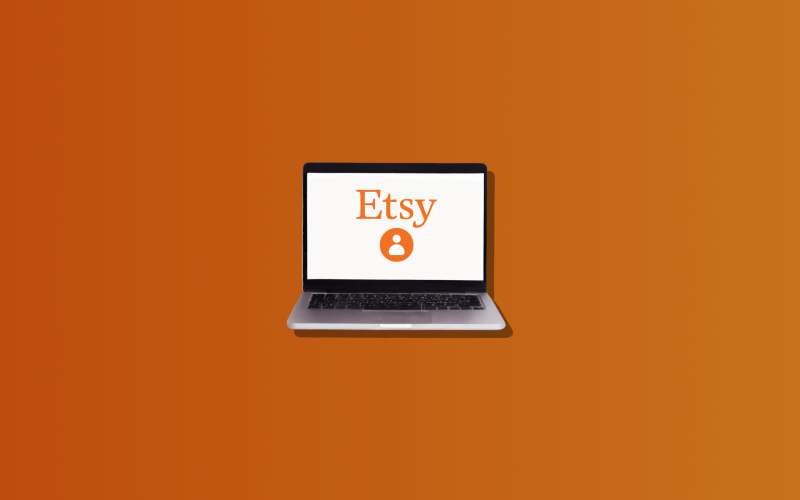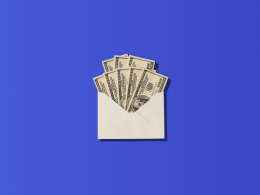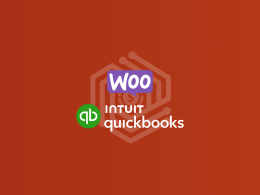If you’re selling hand-made, vintage, or artisan products, Etsy is a natural choice. However, as with all the large sales channels, there’s a web of fees that you can get tangled in.
It’s not only what you need to pay but also, how much of your profit is being eaten by these charges, and how to manage the bookkeeping part of all these different fees.
The good news is, it all can be entangled and sorted. We know it from experience, working with thousands of online businesses on Etsy, Shopify, Amazon, eBay, and Walmart. We make software that helps our clients automate their bookkeeping, for every part of their order, including, fees, taxes, shipping, discounts, and any charges.
That’s why in this article, we want to share all that we know about Etsy selling fees and show you how to practically approach fee management, so you know exactly how much you pay in fees.
Keep an eye on your Etsy fees and other expenses at all times with Synder. Find out how Synder can help you organize your finances for optimal results.
TL;DR
- Standard Etsy seller fees include listing fee, transaction fee, and payments processing fee.
- Additional Etsy fees comprise of Etsy pricing plans (free and paid), advertising fees, shipping costs, special transaction fees, and Etsy Pattern.
- Automation is the best solution for Etsy fee management, including tax on Etsy service fees, where applicable.
Contents:
1. How much does Etsy charge to sell?
3. Etsy transaction fees (6.5%)
- Payment processing fees ($0.25 and 3%)
- Regulatory operating fee (0.29% – 2.27%)
- Currency conversion fee (2.5%)
6. Ad fees
8. Subscription fee (free or $10/mo)
9. In-person selling fee (min 2.6% plus $0.10)
11. What percentage does Etsy take?
How much does Etsy charge to sell?
That’s an important question when you want to open an Etsy shop but the answer, unfortunately, isn’t simple. You start with a set-up fee of $15 but that’s just the tip of the iceberg.
Etsy has various fee charges, and understanding the total requires knowing which fees apply to your store and products. In our article, we’ll break down each fee so you can accurately calculate the total costs for your Etsy shop.
Below is the list of all seller fees.

Etsy listing fees ($0.20)
One of the mandatory fees, the Etsy listing fee is a flat fee of $0.20 which is applied to each item you list on Etsy*. You’ll be charged regardless of whether you actually sell this item or not.
However, some other Etsy seller fees fall into this listing category that the seller should know about.
*If you also sell on Etsy Pattern, there are no additional listing fees, and these listings never expire.
Auto-renewal fee
Etsy can automatically renew your listings and charge you another $0.20 if your item hasn’t sold after 4 months. While this feature does save you time, it may come as a surprise to lots of new sellers. So unless you want your items to be relisted every 4 months, opt out of automatic renewals by clicking Manual instead of Automatic under Renewal Options in the Listings Manager.
Multi-quantity listing fee
If your customer buys multiple units of the same product from your shop and they don’t come as a single pack, be ready to pay an additional $0.20 per item. That’s on top of the $0.20 listing fee that you’ve already paid when listing the product.
The multi-quantity fee is applied when an item is actually sold. As it might sound a bit confusing, let me explain it in detail.
On Etsy, you might have multiple stock items of the same product listing. If you have 6 items, for example, you pay a single listing price of $0.20 when you list all the items but you pay $0.20 for each additional item when you sell them. When all the items get sold in the same transaction, you’ll see the original listing fee of $0.20 and a multi-quantity fee of $1.00 (in our example with 6 items).
Private listing fee
Etsy’s functionality allows you to create private listings, which can be very helpful if your shop handles custom orders. Here, the amount of money you pay remains the same, it’s just the timing that changes (compared to the standard listing).
With the private listing, you only pay the $0.20 listing fee once the item is actually sold. That makes sense, as a product is made for a specific buyer.

Etsy transaction fees (6.5%)
Each time you sell something on Etsy, you have to pay a transaction fee of 6.5% of the total sales price that’s applicable for this item. To calculate this total amount, you need to account for:
- Product price;
- Shipping costs;
- Gift wrapping;
- Personalization;
- Taxes (in those countries where tax is inclusive of the price).
This is important because many new Etsy sellers think that the 6.5% transaction fee is only related to the listing price, while that’s not the case.
Etsy Payments fees
When you run an Etsy shop, it’s not only the products that bring fees your way but payments too.
Etsy has its own payment processor called Etsy Payments. And if it’s offered in your country, you must use it. The associated fees depend on a number of conditions, including the seller’s country and the currency listed on the Etsy payment account.
Let’s have a look at the various fees Etsy charges for these payments.
If you’re looking for Etsy Payments alternatives, check out our guide.
Payment processing fees ($0.25 and 3%)
If you use Etsy Payments, you also cover the costs of handling credit card or bank transactions, but that comes with an Etsy Payments processing fee or just a processing fee for short.
The conditions for eligible countries differ, but in the US, sellers pay a flat rate of $0.25 and 3% of the total order cost for payment processing. The final sales price of a product includes tax (if applicable in your country) and shipping.
NB! Don’t confuse Etsy’s transaction fee with Etsy Payments processing fee! The transaction fee covers the cost of using the platform, while the payment processing fee is a charge for using Etsy’s payment processor—Etsy Payments.
Regulatory operating fee (0.29% – 2.27%)
Sellers from the UK, France, Italy, Spain, Vietnam, India, and Turkey have to pay an additional regulatory operating fee on each transaction they complete in their Etsy shop.
Etsy charges a fixed percentage of the total sales price of the item including shipping, gift wrapping, and personalization and it varies between 0.29% and 2.27%, depending on the country mentioned above.
Etsy explains that this extra fee is due to additional regulatory compliance costs in those particular countries.
Currency conversion fee (2.5%)
If the currency on your listing differs from the one registered on your payment account, Etsy will charge you a 2.5% currency conversion fee on the total sales price of the item.
You can avoid it by keeping the listing currency and account currency the same. Don’t worry about the buyers, they’ll see your listings in their chosen currency.

How to manage Etsy fees?
If you keep scrolling, there are still more fees that you might incur like Etsy ads fee, shipping fee, in-person payment fee, etc. But before you get overwhelmed by those charges (if you haven’t already), let’s take a pause here and think about how you can manage this growing sea of fees.
How do you pay Etsy fees?
When it comes to paying fees on Etsy, the platform will automatically deduct these costs from your payment account. Then, based on your selected payout schedule, Etsy will deposit the remaining funds into your bank account—that’s your net revenue.
If you don’t have enough money in your account to cover it, you have 15 days to pay the outstanding balance.
How do you account for fees in your books?
Fees are your expenses, and you need to put them into your expense accounts. But Etsy already took this money, in fact, it never touched your bank account, so how do you do that?
Going through Etsy statements and manually inputting these fees into your books is one way. But that takes ages and can easily lead to mistakes. That’s why automation solutions like Synder are a way forward.
Syncing your Etsy account with your bookkeeping software
Synder lets you create an ecosystem of connected platforms like Etsy, Etsy Payments, Square (for those in-person sales), PayPal or other sales channels (Shopify, eBay, Amazon, Walmart), and payment processors (Stripe, Afterpay, or Affirm). In total, we have over 30 available integrations.
All the transaction data from the connected platforms will be synced straight into your accounting software. We support most popular accounting systems on the market:
- QuickBooks Online;
- QuickBooks Desktop;
- Xero;
- Sage Intacct.
Synchronization becomes fully automated once the Synder ecosystem is created. And there, you can reconcile your accounts, create financial statements, and manage your bookkeeping.
Automated syncing of Etsy fees
Through our direct integrations, you get your fees straight into your books—allocated into the right accounts. You can set up categorization rules too, so that when tax time comes, every fee is already categorized correctly.
Taxes on fees and sales
Some countries (like Canada or the EU) require Etsy to collect taxes on the service fees it charges to its sellers. Even though this process happens automatically, you still need to record the tax in your books. Synder can provide this information and automatically allocate the tax to the correct account.
The same goes for sales tax. In many countries, large marketplaces like Etsy, Amazon, and Walmart handle tax remittance. While this saves you from doing it yourself, you still need to accurately record these amounts in your books. And as above, Synder does exactly that.
If you want to learn more about Synder, join us at our Weekly Public Demo or Themed Webinars where we talk about Synder’s capabilities and all things business accounting.
Ad fees
If you want to promote your Etsy shop or products, you can choose to go with:
- Etsy Ads;
- Off-site Ads.
The first one lets you market on Etsy itself while the second one works outside of the Etsy website. Both types of ads, not surprisingly, come with extra costs.
Etsy Ads fee
The cost for Etsy Ads is determined on a ‘pay per click’ (PPC) basis, which means that you pay whenever someone clicks on your ad (not when the ad is displayed), even if it doesn’t result in completing a purchase.
The good thing here is that you can determine the budget you’re willing to spend on this type of advertising. This can be as little as $1.00 a day and Etsy won’t charge you more above your predetermined daily threshold.
Offsite Ads fee
For Offsite Ads, the situation is rather different and more complex.
As the name suggests, these are ads placed elsewhere than Etsy’s main page—usually, social networks and search engines. But here, you don’t pay for clicks but for actual purchases which is for sure better news. If a user sees your ad, clicks on it, and then makes an order from your Etsy shop within 30 days, that’s when you get charged, otherwise, you don’t. They’re called Attributed Orders.
How much are Attributed Order fees?
Some sellers can opt out of these ads, others can’t but all sellers are automatically enrolled in it when they join Etsy. Here’s how it works:
- If your sales don’t exceed $10,000 for 365 consecutive days, Etsy charges a fee of 15% of the total order amount, but you can opt out of this feature altogether.
- However, if your sales exceed the threshold of $10,000 for 365 consecutive days, Etsy will charge you a fee of 12% of the total order amount, but you can no longer opt out. What’s more, once you cross the $10,000 you’ll be charged this 12% for as long as you have the shop (even if your sales at a future point of time fall down).

Shipping label fee
This applies to sellers from the US, Canada, UK, and Australia who accept payments via Etsy Payments or PayPal and who purchased Etsy’s shipping labels.
On the one hand, you have the shipping label itself that depends on the dimensions of the package, its weight and origin, the shipping carrier, and destination—the usual things you take into consideration while ordering shipping. On the other hand, you have extra services like signature confirmation, insurance, or parcel compensation.
All of the above comes with a price tag but there isn’t a set amount that we can share as it depends on too many factors. You’ll be able to see the total cost of shipping label fees when you purchase the label with the additional services (if you choose to go for them).
Subscription fee (free or $10/mo)
When you sell on Etsy, you’re automatically enrolled in the Etsy Standard package which gives you access to all regular tools and services for managing your shop. Thankfully, this one is free.
However, there’s also a paid package of $10 a month, called Etsy Plus. It comes with additional bonus features like discounts on domain customization, packaging, and promotional materials, listing and ads credits, restock alerts, and more.

In-person selling fee (min 2.6% plus $0.10 )
If you sell on Etsy and have a physical store, you can use Square to collect payment in person. Thanks to the Etsy-Square collaboration, you can sync your inventory with your Etsy listings and the quantity available will be automatically updated. You’ll be charged the usual $0.20 listing fee. But if you don’t sync it, there’ll be an additional transaction fee of $0.20.
As the payments are processed through Square and not Etsy, all the transaction and payment fees will come from Square. These Square fees are for an article of their own, but for the standard processing fee, you’re looking at a minimum of 2.6% plus $0.10 per transaction.
Pattern fee ($15.00/mo)
Etsy Pattern is a special tool that lets you set up a separate website in addition to your Etsy store. It’s easy to set up and customize, and it automatically syncs with your Etsy shop, so you don’t have to list products twice.
As always, there’s a fee. The monthly subscription for using Pattern costs $15.00.
For more information on Etsy fees, you can visit Etsy’s website.
What percentage does Etsy take?
If you search this question online, you’ll get the answer of 6.5%, but by now, you know very well that’s just the Etsy transaction fee and not the whole answer. So how much does Etsy in fact take? Let’s calculate.
Here are the standard fees:
- Etsy transaction fee: 6.5%
- Etsy processing fee: 3%
That gives us 9.5%, plus the listing fees for each item and other mandatory flat fees. We also should add shipping costs (shipping label + shipping fees) to it, which can average around 5% but can vary greatly (the smaller the item, the higher the shipping cost percentage). So now, we’re touching somewhere close to 15% which is more or less the right figure.
But there’s more. Here are some extra (possible) fees:
- Etsy conversion rate fee: 2.5%
- Etsy Offside Ads fee (on Attributed Orders only): 12% – 15%
- Etsy regulatory operating fee (for selected countries only): 0.29% – 2.27%
- In-person selling fee (Square fees): from 2.6%
This list only gives you percentages, but there are all the flat fees, like the subscription fees, to consider. So, you might end up paying anywhere between 0.29% and over 20% on some orders. And this is on top of the standard fees we calculated earlier.
To have your fees, orders, taxes, and various charges automatically synced into your books, sign up for a 15-day free trial with Synder.
Etsy fees 2025: Closing thoughts
Running an Etsy store can be profitable, no doubt. But you need to come equipped with the right information and the right tools to help you along the way.
There are no online sales without fees, but there can be fees without a headache.
We hope that in our article, we’ve managed to describe each fee in detail, showing you what you need to pay or what you can steer clear of. Our calculation can give you an estimate of what you can expect to spend. But for real data on your sales, rely on automation software, like Synder, that provides you with an accurate picture of your sales, expenses, taxes, and all additional charges, discounts, or refunds.
Share your experience
We’d love to hear how Etsy sellers manage seller fees or any questions and challenges you face with Etsy fees. Share your thoughts and experiences in the comments to help fellow sellers optimize their strategies.

.png)





Just starting a new business that only sells custom made products.Will that work with Etsy
Hi Archie! Etsy is a great platform for selling custom-made products. If you want to learn more about Etsy you can read our article marketing your Etsy store.